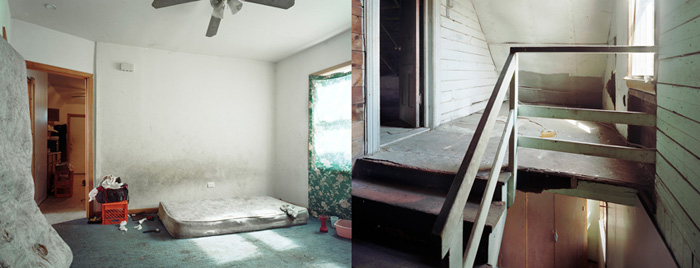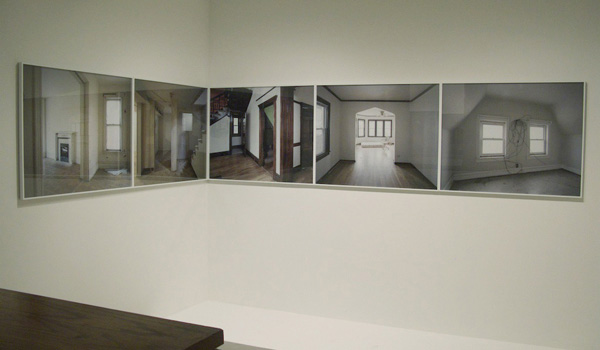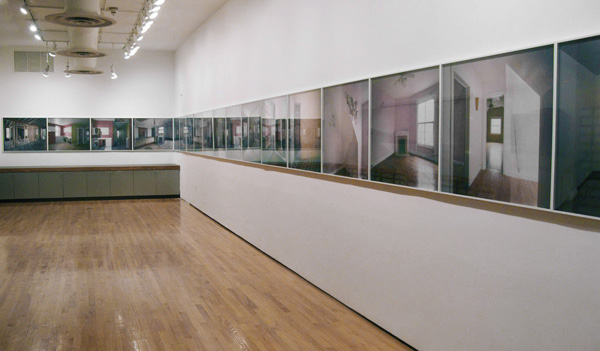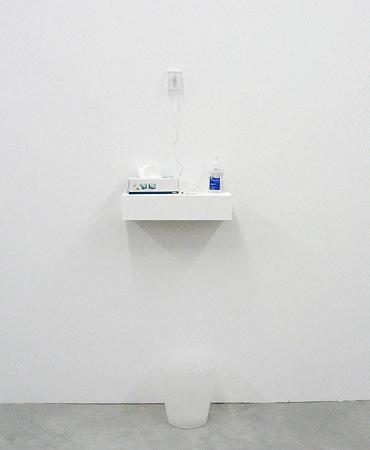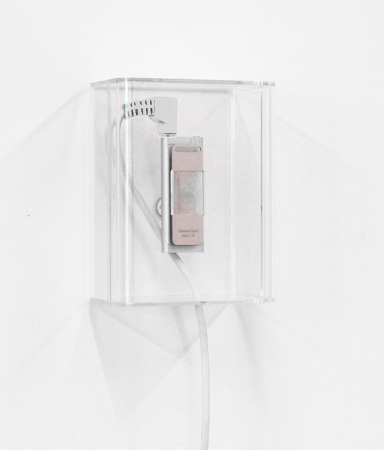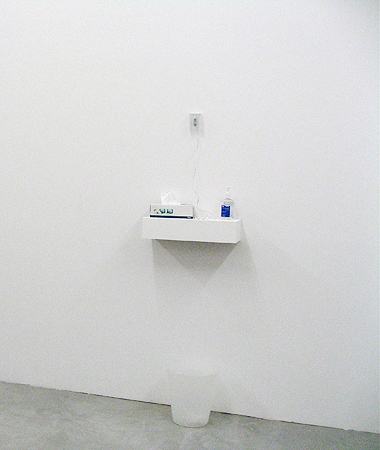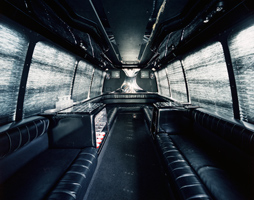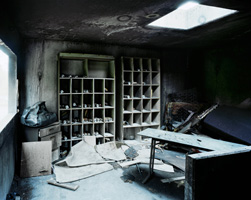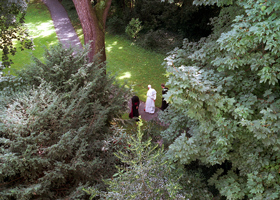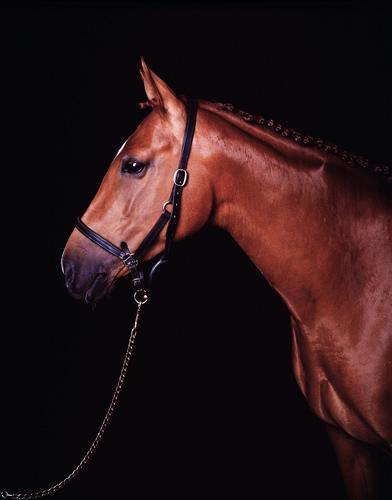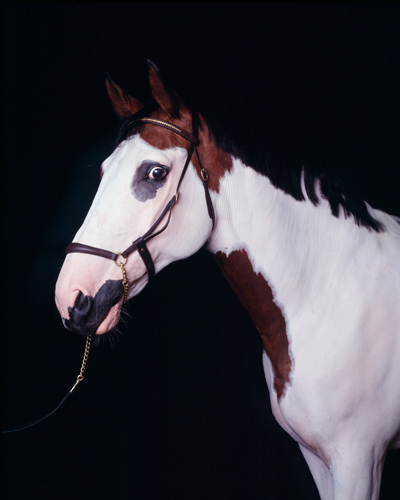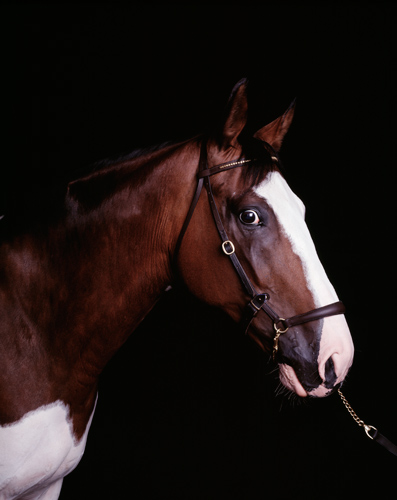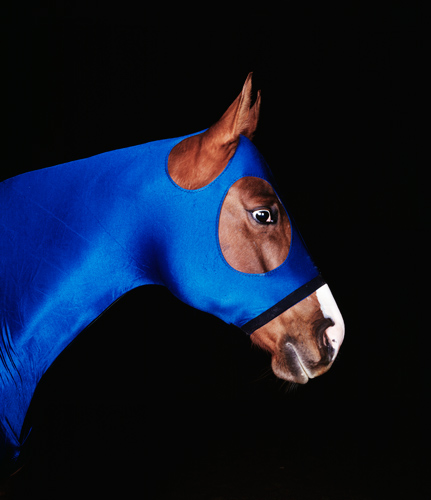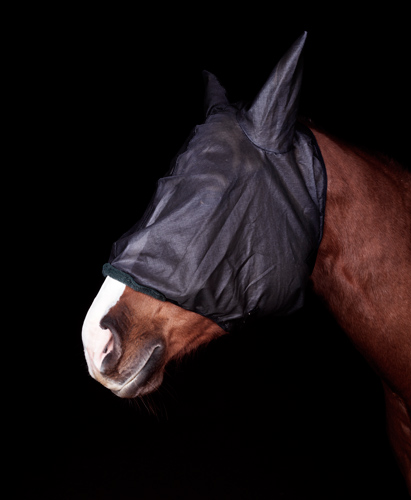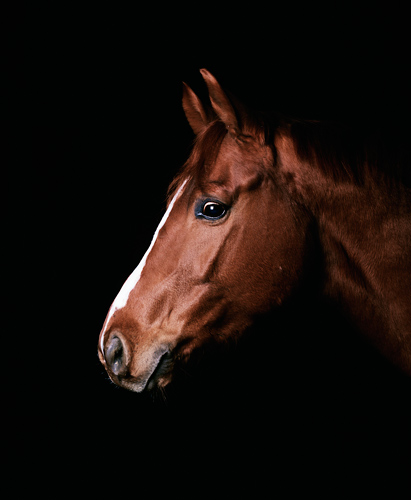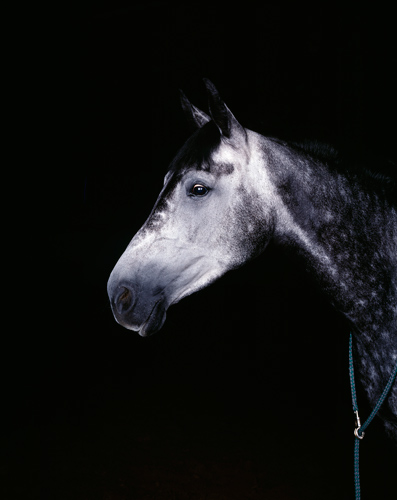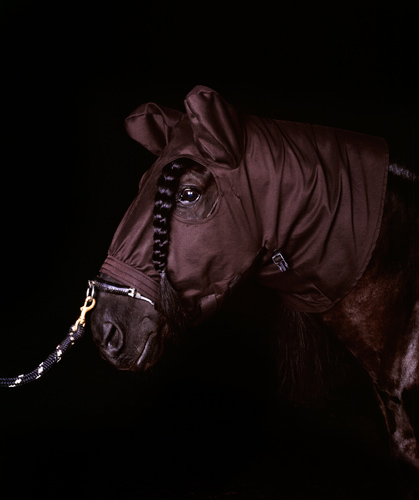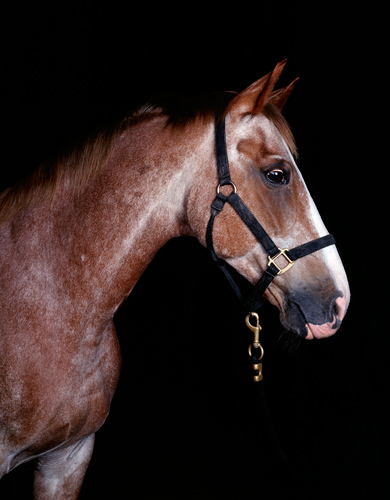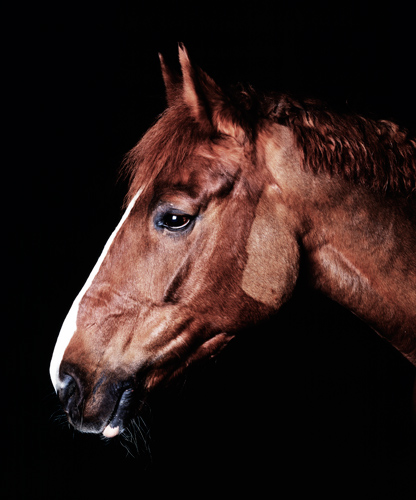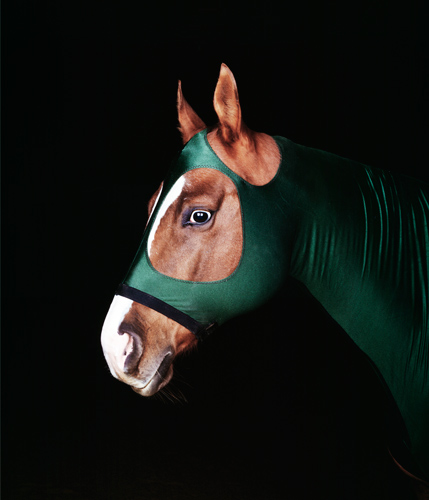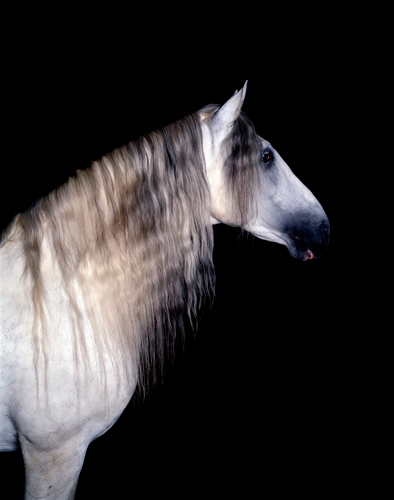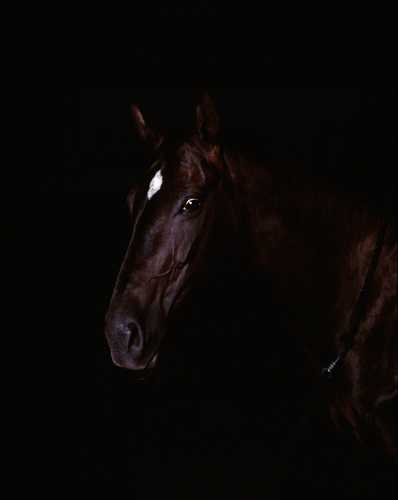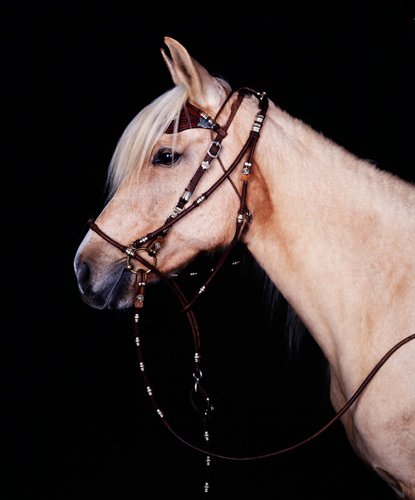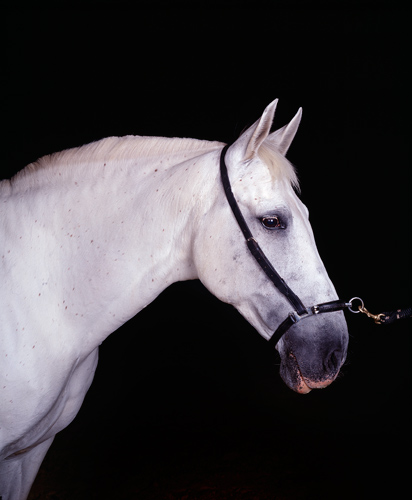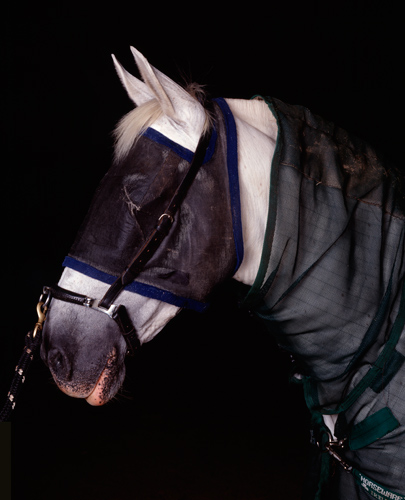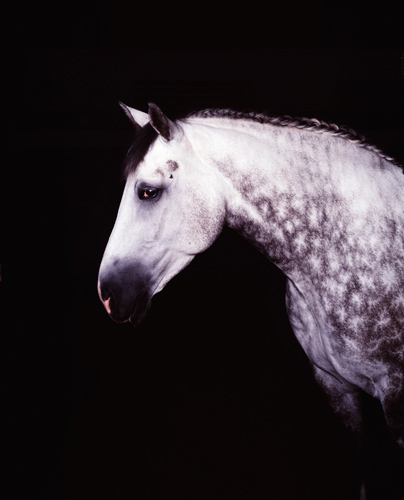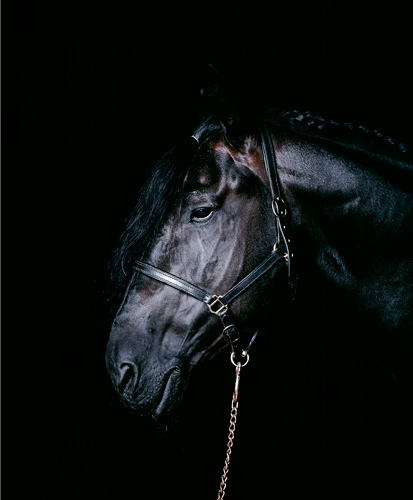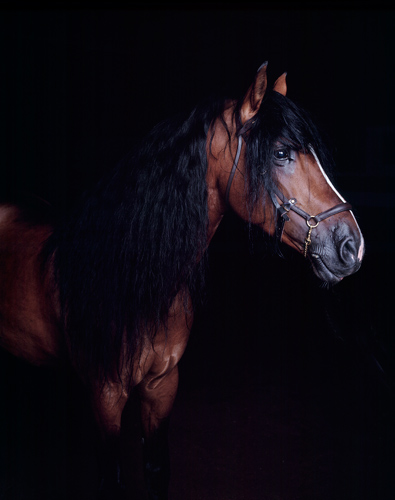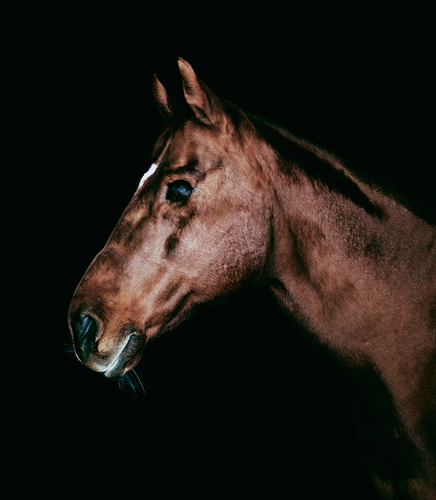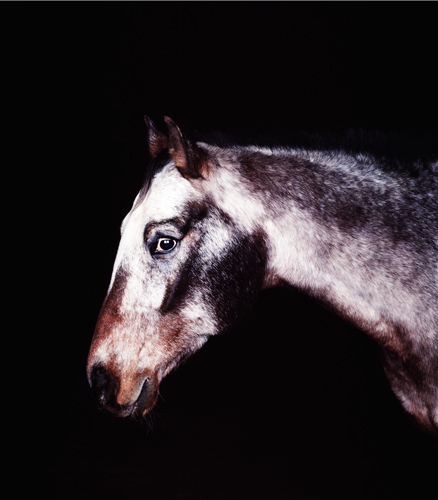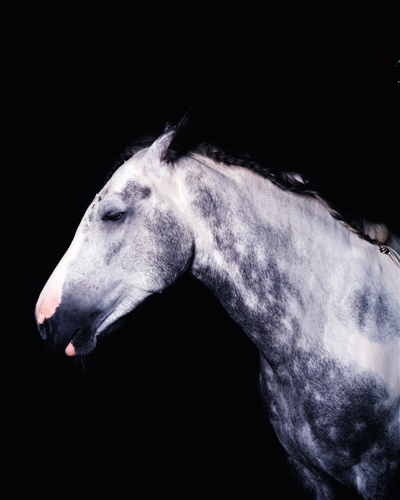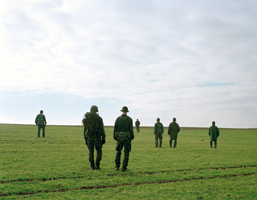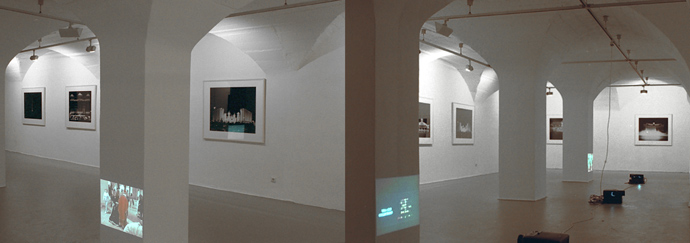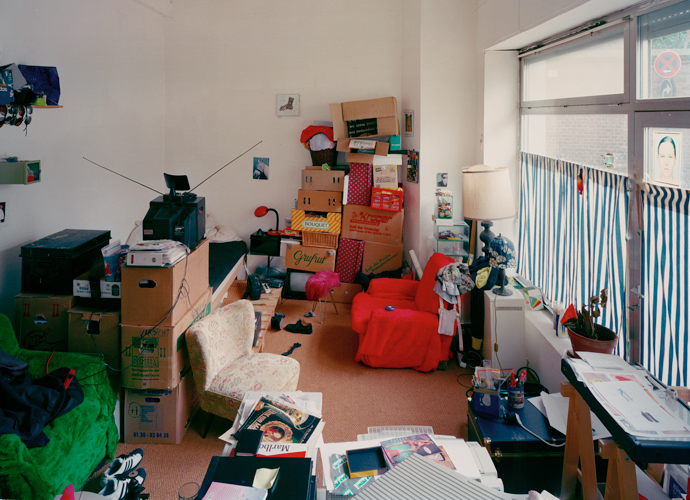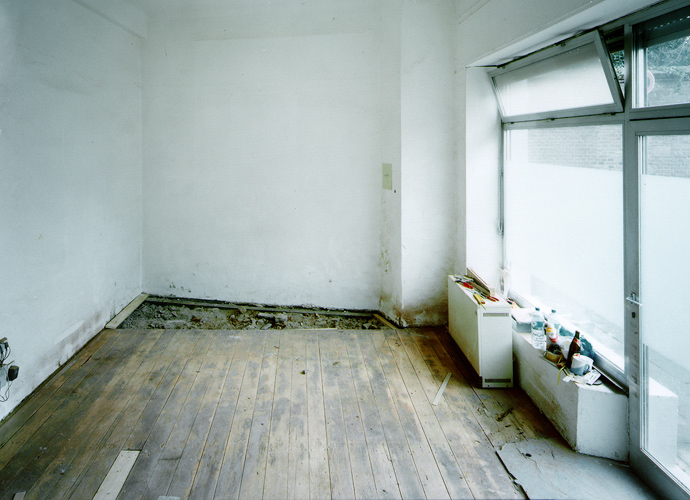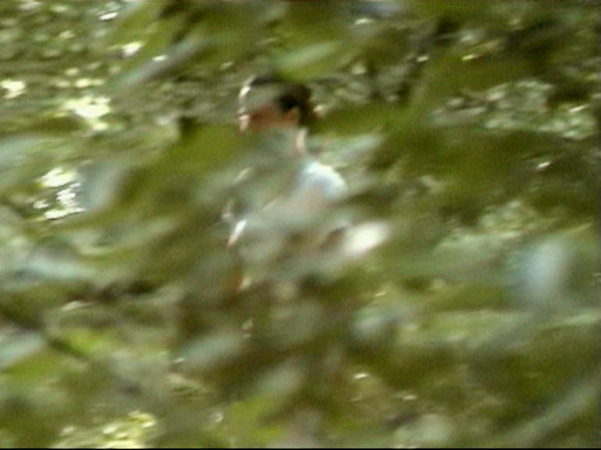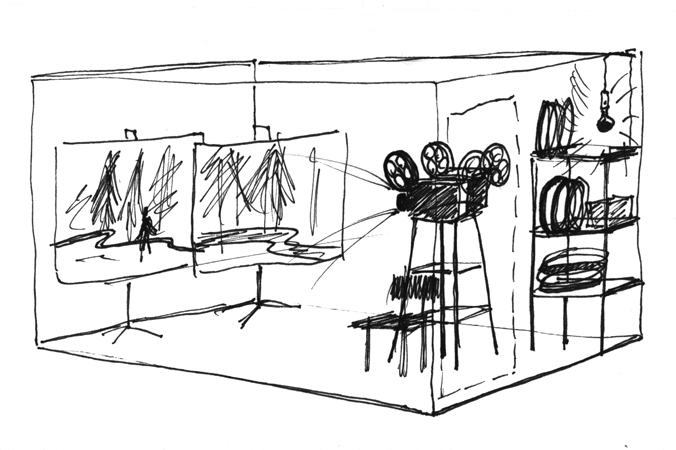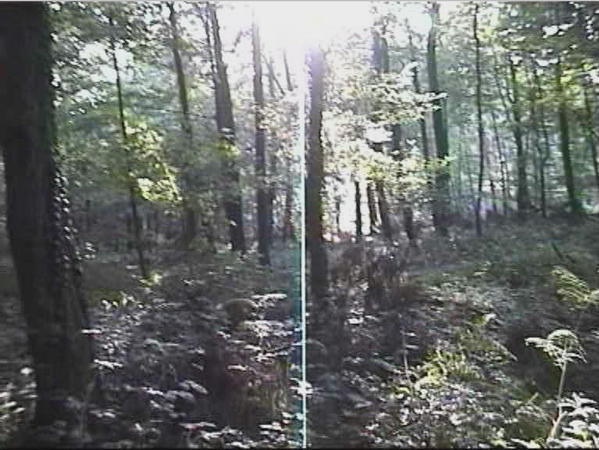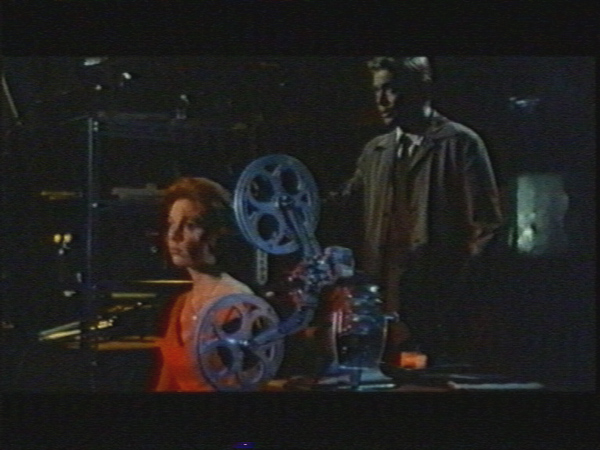With their carefully chosen exhibition title “Volatile Smile,” Geissler/Sann allusively combine the exhibition’s parts into a complex whole, and link them to the contemporary global economic and financial crisis. ~ more
2011
volatile smile (installation)
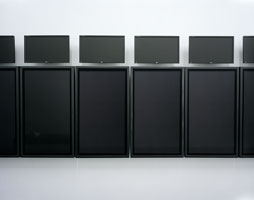
2011, Inkjet-print, 100 x 125 cm
For the exhibition “volatile smile”, the artists took an in-depth look at the territory of the commercial and financial sectors, examining the offices of trading companies in Chicago through photographs and extensive interviews with traders, programmers and businesspeople. This material from the stage settings and playgrounds of the daily flow of money, already revealing in and of itself, and both imposing and frightening in its roughness and compactness, has been rendered into an impressive installation in the main part of the exhibition. Contrary to expectations, the wall of monitors stays dark. The LEDs glow to show that the power is on, indicating that all of the installation’s equipment is ready for use. The groupings of the flat screens, sorted according to various principles of composition, correspond to the photographs that the artists took in various trading companies’ offices. These groupings recreate the amassed configurations of monitors typically found on brokers’ desks. There is no trace of the now-vanished flickering changing columns of numbers running across the screens, synchronizing global markets and commodity exchanges, nor of the billions of computations driving their automated trading on the basis of algorithms known only to insiders. Charts, churns and clearing houses have all been turned off. In this way, the black rectangles of the computer screens become formal aesthetic elements. It is no coincidence that they echo the paintings of Mondrian and Malevich’s Black Square more than they cohere with media art and its time-based video and sound installations. Something erratic has been inscribed into the installation. [...]
The powerful image of a dark, possibly destructive power may be imperfectly analogized with the term “black screen,” which arose in the offices of the finance world in the early 1980s. When there were no offers for trades, the columns of numbers and information would wander out of view on the CRT monitors of the time, and the screens would go entirely black. That was the trader’s true dystopic moment. [...]
The portrait of a young man in the front area of the exhibition can function both as the alter ego of an exhibition-goer and as a representation of the traders whose workspaces provide the basis for the configurations of monitors in the media installation. Geissler/Sann’s “shooter” documentation aimed at capturing the absolute concentration and particular facial expressions that characterize the intense experience of virtual killing, and at retaining phenotypes of conscious action. These reaction patterns are generated in the process of computer simulation. The comparison between computer games and exchange traders makes clear the irrationality of action within automated systems. The artists found the atmosphere on the trading floors similar to the LAN parties’ concentrated, crazed mood. In view of these protagonists’ exceptional skill and ability, it would seem, at least in the virtual world of computer games and exchange trading, as though freedom were more of a physical process than an act of will. The almost narcotic addictiveness of constantly changing arithmetical operations and the images generated by them, whether columns of numbers or threatening comic book foes, limits creativity and freedom of choice. Yet free will is defined not least through refusal. Perhaps Geissler/Sann thus think it necessary to display no images or numbers on their video apparatus, and to dare to actually exhibit black screens. [...]
In the secret center of the exhibition, a large-scale photograph of a rhinoceros unfolds in its monstrous and majestic singularity. A creature that cannot understand the instincts of the human—whom it faces steadfastly. This is a photograph of a rhinoceros from the Nuremberg Zoo, where the animal is kept in memory of Albrecht Dürer. This mighty animal was entirely unknown in Europe until one was given by Sultan Muzafar II, ruler of Gujarat, to King Manuel I of Portugal. Dürer was so fascinated by the rhinoceros that he made a woodcut of one in 1515, purely on the basis of descriptions, without ever having seen one. At first the image of the rhinoceros seems out of place among the other components of the installation. But doesn’t the rhinoceros, in its primeval appearance, make reference to a much larger story in which even a stock market crash is only one event? Dürer’s rhinoceros poses the question as to the relationship of the real to the symbolic, and of artistic and creative design to the physical object. Might it direct us to a possible way out of our ideas—however precise and accurate they might be—of reality and how we experience it? [...] The rhinoceros, too, lives comfortably in its artificial habitat, though it can no longer even dream of the wilderness or the great wide world. ν What is going on here is, after all, the simulation of reality—a reality with consequences that must call on us to radically rethink our economic and social concepts. The consequences and feedback from market transactions are very real. The situation is systemically inexorable, and virtual death would only be an individual attempt at escape. The processes are entirely decentralized. The ceaselessly progressing operations are irreversible, and follow what the media theorist Friedrich Kittler has termed a logic of escalation. Can we develop alternative ways of acting outside of the computer-driven world? Can we survive? Help us rhinoceros! — Text by Frank Wagner, NGBK
x close
2010
volatile smile (photographs)
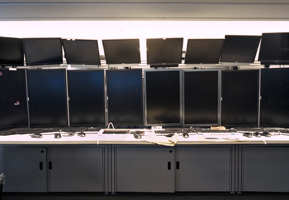
2010, Inkjet-print, 120 x 150 cm
How to trace the genealogy of computerized trading back to its origins in the strategic technologies of electronic warfare? How to understand the minimalist artistic intervention that exposes multiple facets of a single cybernetic paradigm? ~ more
In the first of her experimental novels, Virginia Woolf describes a boy’s life through a continuous slippage between the multiple affective worlds of those around him, mostly women (his mother, her companions and relatives, a girlfriend at college). These intimate feminine worlds are suffused by his presence and his changes over time, inseparable from their own becoming. The narrative ebbs and flows between the viewpoints and the emotions, building a pulsating texture of relations that does not focus on anyone in particular, but instead creates a warm and complex space of trans-subjectivity, punctuated with events that only matter insofar as they are felt in discrete yet echoing sequences by different human beings. At the close of the novel the young man leaves the United Kingdom for travels in Greece and then is called away, with an entire generation, to his death in the First World War. Of this brutal end we are told nothing, there is no witness. Instead the narrative culminates in a description of the place where all the characters’ paths have originated or crisscrossed at some point, if only in the form of letters left strewn upon a table. This empty yet brimful space gives the novel its title, Jacob’s Room: "Listless is the air in an empty room, just swelling the curtain; the flowers in the jar shift. One fiber in the wicker arm-chair creaks, though no one sits there."
To be sure, the empty rooms that Beate Geissler and Oliver Sann have photographed cannot have this poignancy, this brimful quality. They are just real estate, deflated dollar-figures stripped of human presence, expressing their voided past through the strangely monumental architecture of interior ruins. Or to the contrary, the empty rooms of the photographs contain the rigidly modular architecture of contemporary financial power: imposing black rectangles of blinkered vision, the trader’s secret world of screens. On such screens took form the simulated environments of the housing bubble, where inhabited spaces became fictional signifiers of an impossible wealth, before their owners went bankrupt in reality and left them behind as the residue of an historic crisis. Many of the abandoned properties stand vacant to this day. Meanwhile the traders have moved ahead, probing new regions of the market with faster and more powerful computers. Between decaying ruins and waiting screens, a destiny is gathering.
The photographs confront us with an enigmatic relation between formerly lived spaces and an anticipatory electronic surround. To understand it, this text will turn away from the flourishing investment banks and the homes left valueless by the subprime meltdown. Instead we will peer back into ghostly spaces illuminated by a flickering greenish light: the computerized tracking stations of the Cold War. The logic of a deadly purpose unleashing itself within the dynamic coordinates of a simulated environment is what emerged from the efforts, during WWII, to create a calculating machine that could help an anti-aircraft gunner home in on a dodging enemy plane. Cybernetics was the science that placed a human operator before that flickering light, to take apparently fictional decisions with immensely real consequences. Over the following decades the computerized environments multiplied, spreading outward from the radar tracking stations and the grounded cockpits of flight simulators to create interactive models of every kind of dynamically evolving situation. After the thaw of US-Soviet relations in the 1980s, globalized finance rapidly emerged as the non-place where the cybernetic logic would bear its strangest and perhaps most powerful fruits.
Geissler and Sann have long experience with the cybernetic paradigm. Their earliest works were portrait photographs of first-person shooters wired into multiplayer video games. At the "LAN parties" of the century’s turn, they realized how the affects and the very physiology of the players get caught up in the prescripted drama of a deadly fiction. They went on to photograph the simulated combat spaces of a US military training ground in Bavaria where the video games had morphed into 3-D environments, theaters of a gripping new reality for soldiers on the road to Iraq and Afghanistan. They could not have initially suspected any relation between these simulated sites of urban guerrilla warfare and the empty flats they encountered upon their arrival in the United States. It was the trading desks that provided the missing link. The entire question lodges in the parallels between these very different kinds of empty rooms.
How to trace the genealogy of computerized trading back to its origins in the strategic technologies of electronic warfare? How to understand the minimalist artistic intervention that exposes multiple facets of a single cybernetic paradigm? The answers are tangled up with the history of a machine system that gradually voids reality of its human actors, instituting what the epistemologist Karen Knorr Cetina calls a "post-social relation." Through a complex process of videotaped interviews, background research, architectural modeling and large-format photography, Geissler and Sann have explored that relation and discovered its roots in our everyday experience. Criticism seeks in its turn, not merely to comment and to judge, but to extend the exploratory process beyond the bankers and the real-estate traders, toward the operating principles of the contemporary world-system. In the course of this shared inquiry, art becomes the collaborative space of an extradisciplinary investigation. — Text by Brian Holmes
x close
Fighting City, Berlin Ruhleben, Walk-through (video)
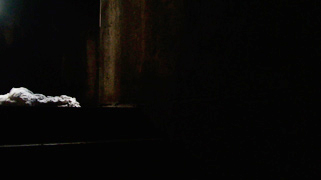
HD-DVD, 4:50 min., color, sound
personal kill (installation)
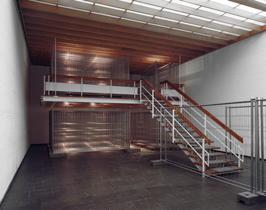
Documentation of the installative part of the work group ~ more
Documentation of the installative part of the work group "personal kill" at Kunsthalle Bremerhaven in 2010.
See also YouTube Channel of Kunstverein Bremerhaven: http://www.youtube.com/KuVeBremerhaven
x close
2009
the real estate

In early 2008, the current economic crisis was well under way. The percentage of the nation’s homes that were vacant and for sale or rent was at historic highs. Foreclosure rates were rising, while home prices, which had begun to fall in 2006, continued to plummet. Nationwide, the number of homes that have been foreclosed over the past four years is estimated at more than six million. Many of these homes remain empty; most of them represent a family or person that has been displaced. ~ more
When the artists Beate Geissler and Oliver Sann moved to Chicago from Germany in early 2008, the current economic crisis was well under way. The percentage of the nation’s homes that were vacant and for sale or rent was at historic highs. Foreclosure rates were rising, while home prices, which had begun to fall in 2006, continued to plummet. Nationwide, the number of homes that have been foreclosed over the past four years is estimated at more than six million. Many of these homes remain empty; most of them represent a family or person that has been displaced.
In this disheartening environment the Geisser/Sann family began to search for a place to live in Chicago. Out of necessity they spent their days consumed by real estate, surrounded by evidence of the housing crisis. Eventually they felt a need to react to the situation and began photographing foreclosed properties all over Chicago, ranging from homes worth a few thousand dollars to 3.5 million–dollar mansions. This endeavor resulted in their photographic work the real estate (2008–09), a series of sixty color photographs of vacated interior spaces. Geissler and Sann did not set out to create a social documentary project. Instead, they were interested in probing the concepts of home and ownership. Feeling somewhat displaced themselves as new arrivals to the United States, they began to reflect more deeply on what it means to be uprooted, and to explore the link between familiarity and feeling at home.
The tension between the familiarity and hominess of the houses Geissler and Sann were seeing and the unsettling feelings prompted by their emptiness, combined with the sense that the houses contained untold, anxiety–ridden stories inspired Geissler and Sann to record these spaces. Their photographs demonstrate how ordinary places can be at once familiar and foreign–how easily a homey environment can transmute into something threatening and strange.
Geissler and Sann install the real estate as a long row of images snaking through the gallery space and butting up against each other, separated only by thin white frames and occasionally the architecture of the viewing environment. The imagery is not arbitrarily placed. The artists connect the pictures based on compositional elements formed by architectural details in the spaces depicted. The line created by a floorboard, for example, might appear to connect to a line or a shape in the next image created by a door jam or a shadow, forming a V shape that straddles the two pictures and suppresses the interruption of the frame. This, in turn, can create the sensation of seeing new, illusionary rooms that are also able to provoke the uncanny. It also invites the viewer to link distinct spaces and different types of homes, a gesture that reflects the diversity and far–reaching effects of the economic crisis, to which no one socioeconomic group has been immune.
The idea of the "real" in relation to photographs is paradoxical, since photographs are illusions, far removed from the actual things they depict. Geissler and Sann’s installation strategy suggests that one location runs into the next, and in this way it discourages our fixation on one place, and by extension, one story. Indeed, the story is universal, provoking anxiety not only in those people who have lost their homes, but in anyone who can imagine how painful it would be to lose one, or who fears being next in line for displacement. Geissler and Sann thus remind us that the very idea of ownership is tenuous and elusive, and that life is disturbingly unpredictable. — Text by Karen Irvine, Curator MOCP
x close
I Started a Joke
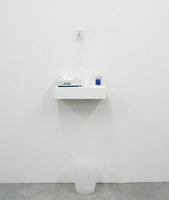
handsanitizer, papertowel dispenser, trash can
"I started a joke. Which started the whole world crying. But I didn't see that the joke was on me..." ~ more
"I started a joke. Which started the whole world crying.
But I didn’t see that the joke was on me.
Oh, no, I started to cry. Which started the whole world laughing.
Oh, if I’d only seen that the joke was on me.
I looked at the skies. Running my hands over my eyes.
And I fell out of bed. Hurting my heads from things that I said.
Till I finally died. Which started the whole world living.
Oh, if I’d only seen that the joke was on me.
I looked at the skies. Running my hands over my eyes.
And I fell out of bed. Hurting my head from things that I said.
Till I finally died. Which started the whole world living.
Oh, if I’d only seen that the joke was on me.
Oh, no, that the joke was on me!"
"I Started a Joke", music and lyrics by Robin Gibb, 1968.
x close
2008
mariposa
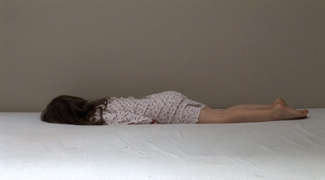
limousine interiors
Series of 4 photographs of limousine interiors.
x close
Fighting City, Berlin Ruhleben (photographs)
"The city, the polis, is constitutive of the form of conflict called war, just as war itself is constitutive of the political form called the city."
from "Landscape as Event" by Paul Virilio.
x close
2007
personal kill (photographs)
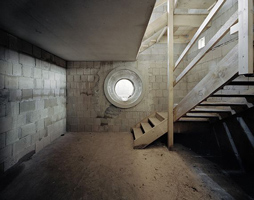
"In Vietnam the term "personal kill" was used to distinguish the act of killing a specific individual with a direct-fire weapon and being absolutely sure of having done it oneself. The vast majority of personal kills and the resultant trauma occur at this range." from "On Killing", Lt.Col. Dave Grossman, 1995. ~ more
The future of war is to be found in cities. Military strategists leave no doubt about this: they have been warning about it for ages. At the be ginning of the 21st century, about half of the world’s inhabitants live in urban communities. In about 40 more years, according to estimates of the UN, this figure will increase to 70 %. The US military claims that the »future of warfare [ ... ] lies in the streets, sewers, high-rise buildings, and sprawl of houses that form the broken cities of the world.«
Urban warfare is incalculable in many ways. It claims a high numbers of victims and is logistically elaborate. At the same time, it obviously offends the idea of a clean war that would not affect civilians and civil infrastructures. From the middle of the 1990sonwards, war strategies successively intensified the MOUT-doctrin ( Military Operations on Urban Terrain ), a strategy giving priority to the training for and the realization of house-to-house combat. Training for MOUT sce narios requires an infrastructure of so called MOUT-sites: simulated places, ghost villages and towns for the preparation of war. In these sites, future war strategies and the dystopias of the newest world order can be seen. These sites add a world of para-cities to the global metropolis, training camps for the severest cases of possible military intervention:
A hidden archipelago of mini-cities is now being constructed across the US sunbelt, presenting a jarring contrast to the surrounding strip mall suburbia; other Third World cityscapes are rising out of the deserts of Kuwait and Israel, the downs of Southern England, the plains of Germany and the islands of Singapore.
Such training sites are symbolic landscapes that represent a political and military reconstruction that includes a very particular order of thinking, and also the disposition and placement of bodies. War is not a spontaneous collision of enemies, it is not an unintentional event; for it must be prepared and produced politically, technologically, territorially as well as architectonically — as a way of thinking, as a bodily effort and as a real practice.
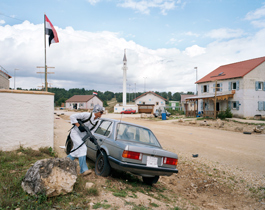
Hohenfels, 2009.
[...] The shift from real war to simulation is part of a general military strategy, beginning with the fight for the perceptual apparatus and for the very production of reality. The aim is to simulate the disappearance of social and psychological impacts. This simulation of a world intact even in destruction brings postmodern warfare to the »agony of the real«, a diagnosis found in media philosophy for some decades: the simulation suppresses what in reality is an object of destruction »In this virtual world«, James Der Derian writes, »dying and killing becomes less plausible—and all the more possible.«
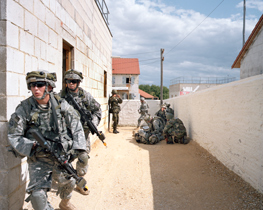
during training at JMRC, Hohenfels, 2009.
[...] According to Lt. Col. Dave Grossman this is the extreme military situa
tion that leads with greatest probability to trauma: »at least 98 percent of all soldiers in close combat will ultimately become psychiatric casualties.« In this sense »personal kill« is the description of a problem, too: Exactly at this point war stops being abstract enough to leave soldiers untouched.
Why? In a recent publication on the illusions of the military dispositif Judith Butler has emphasized the subject’s existential depenxdency on a symbolic bond with others. In reference to Melanie Klein Butler writes: »If I destroy the other, I destroy the one on whom I depend in order to survive, and so I threaten my own survival with my destructive act.« Therefore it »cannot be that the other is destructible while I am not; nor vice versa.« ‘Personal kill’-situations are extremely traumatic, because they confront the subject with the frontier of the symbolic.
Dave Grossmann thus highlights the traumatic character of the inimical gaze: »the stress of looking their [the combatants’] potential killers in the face.« The gaze of the enemy at the very moment of potential death is the very confrontation with an ontological layer in ex
cess of the symbolic.
The evil eye is the fascinum, it is that which has the effect of arresting movement and, literally, of killing life. At the moment the subject stops suspending his gesture, he is mortified.
Mortified by the gaze of the other: One can die several deaths in war And PTSD means especially the following: The deaths that remain to be died to are the guarantee of their own uncanny recurrence.
— Excerpts from an essay by Johan Frederik Hartle for the book "personal kill", published by Verlag für moderne Kunst Nürnberg, 2010
See also YouTube Channel of Kunstverein Bremerhaven: http://www.youtube.com/KuVeBremerhaven
x close
2006
fuck the war

"The film on the one hand is a contemporary LORD OF THE FLIES, evoking the ongoing senselessness of violence and war and bringing the message home by allowing German (rather than Iraqi or Sierra Leonese) children to explore the giddy chaos of military power. At the same time, it speaks to the innate instincts and primitive impulses that remain only shallowly buried beneath our civilized surfaces."
Excerpt from the jury's laudation at Videonale 11.
law of inertia
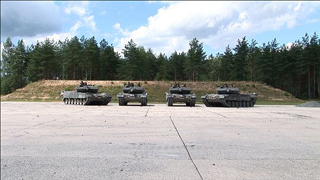
In commemoration of 90 years Panzerwaffe in Germany - farewell of the 3rd battalion 383 - video ballet for four Leopard II.
2005
Return to Veste Rosenberg (photographs, video and installation)
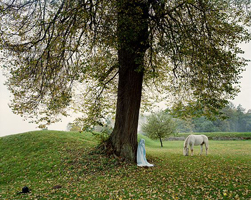
Inkjet-print, 100 x 120 cm
"Geissler & Sann here invent an electronic game and convert it into photographs and video sequences. The action takes place at the Rosenberg Fort in Kronach, and it involves dangerous enemies, enigmatic figures, a fairy, magicians and eternal happiness..." ~ more
Geissler & Sann here invent an electronic game and convert it into photographs and video sequences. The action takes place at the Rosenberg Fort in Kronach, and it involves dangerous enemies, enigmatic figures, a fairy, magicians and eternal happiness. "Return to Veste Rosenberg" documents a reenactment that recalls the videogame Return to the Castle: Wolfenstein (2001), itself a sequel to Wolfenstein (1992), a game remembered in Germany for its official censorship (due to the use of Nazi symbols like the swastika and the anthem of the Nazi Party, "Horst-Wessel-Lied," as theme music, the PC version of the game was confiscated in Germany in 1994). Return to Veste Rosenberg takes place in the largest fortified castle in Europe, in Bavaria, dating from the 12th century. The game references the fantasy genre computer games via its absurdist conflation of past and present archetypes, including monks, fairies, swat team members, and business men, performing the game. The work and the book plunges viewers into a computer game that has become reality. Pictures of soldiery deployed in a medieval fortress alternate with fairy-tale shots of enigmatically phantasmagoric figures from a different time.
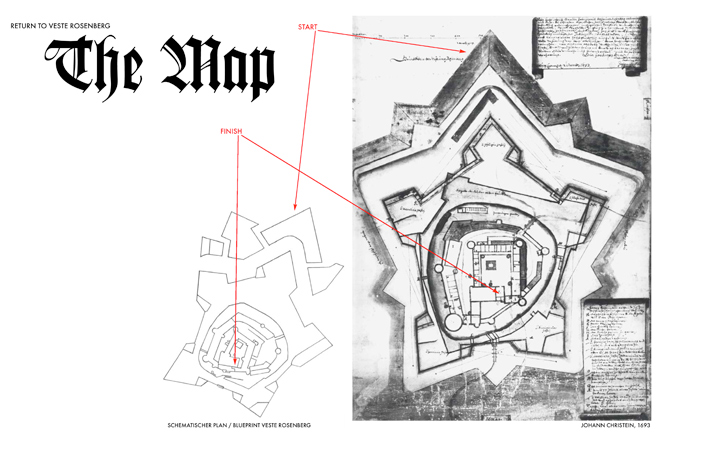
2004
untitled
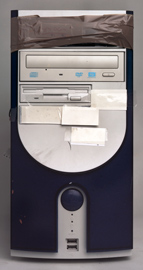
Inkjet-print, 95 x 60 cm
Series of 5 photographs taken at district public prosecution authority, Staatsanwaltschaft München, Germany. All computers in these images were confiscated by the police and forwarded to the attorney general. The owners of the computers were convicted on the basis of the images found on these computers. ~ more
Series of 5 photographs taken at district public prosecution authority, Staatsanwaltschaft München, Germany. All computers in these images were confiscated by officials and forwarded to the attorney general in Munich. The owners of the computers were convicted on the basis of the images found on these computers.
x close
2003
from Las Vegas to Rome (photographs)
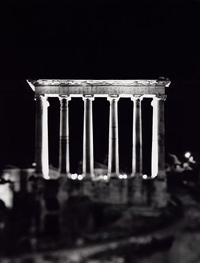
C-print, 126 x 105 cm
This second work group on mass cultural phenomena shows the photographic re-staging of the historic architecture in Rome. ~ more
This work is the second part of the work group "bliss on earth", which dealt with the fake-architecture
copying famous buildings of the international architectural history in the gamblers' paradise Las Vegas.
This second work group of works shows the photographic re-staging of the historic architecture in Rome.
Focus of this work from 2003 are issues of mass culture and their connection with the architectural history of the "eternal
city". Beate Geissler and Oliver Sann have transferred the experiences of their intermedial investigation
they carried out in Las Vegas to Rome and demonstrate the traditions of the monumental architectural staging
as current canon of forms. The work invites the viewer to read art history backwards and to ask
what Rome may have learned from Las Vegas. Informed by Giovanni Battista Piranesi's "vedutes" the artists understand their
work as a contemporary inventory of a culture of ruins and the absence of exterior. Thus the images of historic architecture
become a mirror of today's life. Based on mass cultural icons the artists reflect the residuals and
layers of our visual memory and draw a line from the Nevada desert to mid Italy.
The work group has been produced in the course of one year and contains several video works and a
cycle of 27 photographs.
x close
from Las Vegas to Rome (video)
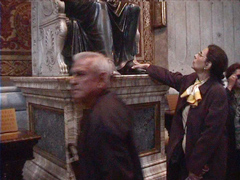
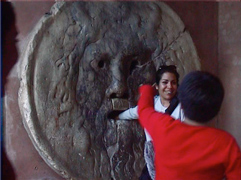
DVD, PAL, 6:35 min., color, sound
DVD, PAL, 8 min., color, sound
Two part video as part of the research "from Las Vegas to Rome".
Two Tales of Love, Music and Peace
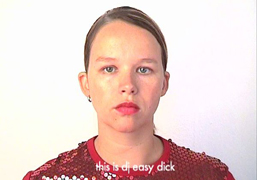
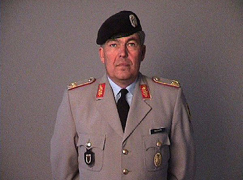
DVD, PAL, 4 min., color, sound
DVD, PAL, 3:35 min., color, sound
Two part video on hierarchy, music business and the things we're longing for.
bullfuck
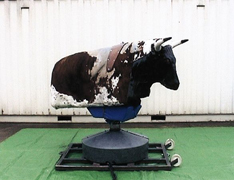
DVD, PAL, 3:30 min., color, sound
e-horse
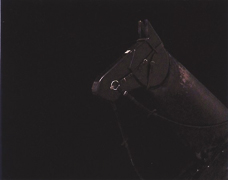
DVD, PAL, loop 17 min., color, sound
2002
horses
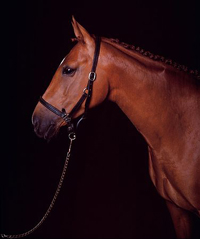
In the series "Horses", the artists tap into the visual and cultural traditions that these animals have historically been party to. As dual symbols of both freedom and conquest, the horses of these photographs are rendered portrait-style: faces cropped against a stark black background. Humanized, then fetishized, the equine subjects of the works are stripped of all naturalness and physicality. ~ more
In the series "Horses", the artists tap into the visual and cultural traditions that these animals have historically been party to. As dual symbols of both freedom and conquest, the horses of these photographs are rendered portrait-style: faces cropped against a stark black background. Humanized, then fetishized, the equine subjects of the works are stripped of all naturalness and physicality.
x close
2001
2000
shooter
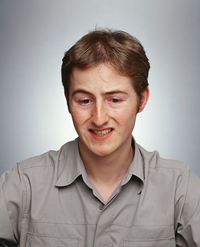
"The two-part work "shooter" consists of a video and photo documentation of LAN parties organised by the artists in their studio over a period of a year and a half." ~ more
"The work ‘shooter’ consists of a video and photo documentation of LAN parties organised by the artists
in their studio over a period of a year and a half. Both the video sequences and the photo documentations
show the players front-on against a neutral background from a constant camera angle. The photographs
are taken in the very moment the depicted person is killing an opponent in the computer game. According
to the artists, ‘The viewer […] witnesses a life-and-death game with no consequences’. ‘shooter’ presents a
test set-up with which to analyse the human relation to real and virtual spaces and the associated gestures
and facial expressions. At the same time, the artists question the function of the real body and the game of
identities with reference to New Technologies." — Text by Silke Albrecht
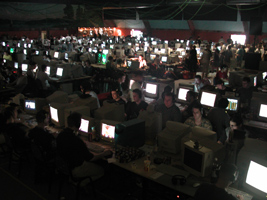
The title of each photograph is a combination of the name the gamer had given themselves and their individual
pulse frequency in the moment the picture was taken.
The specially installed web site features a documentation and a guest book in which the portrayed players
can leave their comments.
http://www.lifeisgood.biz/shooter/
x close
1999
bliss on earth (photographs)
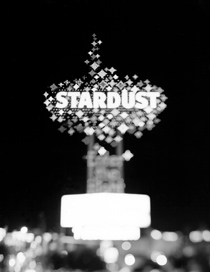
"Bliss on Earth" is a photo and video installation that observes the iconographic development of human history as seen in the mirror of architectural history. Paralleling time, from the beginnings of civilization and the first settlements, across the ages to the modern era and virtual worlds, the "strip" is strung out through the desert, like a necklace made of beads representing various 'high' cultures. ~ more
Using the entertainment metropolis of Las Vegas as its example,"Bliss on Earth" is a photo and video installation
that observes the iconographic development of human history as seen in the mirror of architectural
history. Paralleling time, from the beginnings of civilization and the first settlements, across the ages to
the modern era and virtual worlds, the "strip" is strung out through the desert, like a necklace of beads representing
various 'high' cultures. As the setting for an epicenter where the media and entertainment industries
adapt and assimilate human achievements, Las Vegas is the exhilarated American archetype of
urban development, yet at the same time, remains unique. The city is a test tube in which desires evoked
in America, Europe - actually in all parts of the consumer-oriented world - are distilled. Large format photographs
and video projections feature the compacted themes of the city, casinos, entertainment and amusement
parks, which represent a single culture's global campaign to seize power. Strategically devised, this
campaign understands precisely how to defend and expand its claim to entertain and promise ultimate
ecstasy, without ever having to redeem its promise. In Las Vegas, the feeling is unmistakably evoked that you have finally arrived at the place where the pictures
inside your head were created, and even though they are not genuine, they have been so perfectly
realized that they condense and fulfill the idea: a dream comes true.
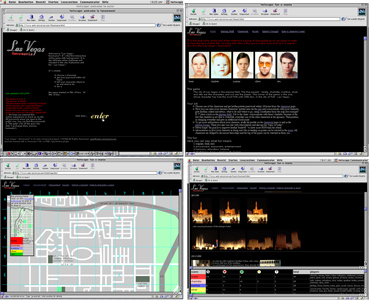
of 6 weeks in Nov. 1999 in Las Vegas. http://www.lifeisgood.biz/funomania/funset.html
The work group has been produced in the course of one year and contains several video works, a real-time online game and a
cycle of 25 photographs of all hotel ressorts on the strip.
x close
bliss on earth (video)
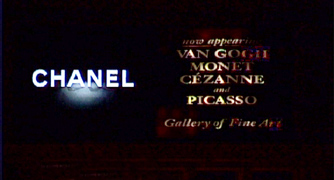
Video loop from the work group "bliss on earth". ~ more stills
Video loop from the work group "bliss on earth".
x close
new romantic
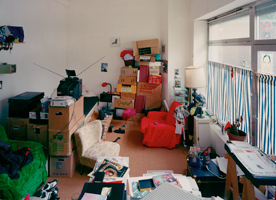
Two photographs from the installation and performance of the same title ~ more
the Trial
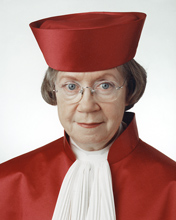
C-print, 90 x 80 cm
1st and 2nd Senate of the Federal Constitutional Court (the Bundesverfassungsgericht), Karlsruhe, Germany ~ more
The title is borrowed from a chapter in Franz Kafka's "the trial", first published in 1925. The work is a portrait
series of all judges of the first and second chamber of Germany's highest court, the Bundesverfassungsgericht
in Karlsruhe. The Federal Constitutional Court (in German: Bundesverfassungsgericht, or BVerfG) is a special court established by the Grundgesetz, the German basic law. The sole task of the court is judicial review. It may therefore declare public acts unconstitutional and thus render them ineffective. As such, it is similar to the Supreme Court of the United States. The Court does not serve as a regular appellate court from lower courts or the Federal Supreme Courts as a sort of "superappellate court" on any violation of federal laws. Its jurisdiction is focused on constitutional issues. Even constitutional amendments or changes passed by the Parliament are subject to its judicial review, since they have to be compatible with the most basic principles of the Grundgesetz.
x close
1998
trivialitas aeterna
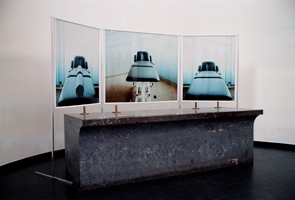
Duratrans on Acrylic, 120 x 100 cm, 120 x 300 cm, 120 x 100 cm
Altar triptych for Trinitatis Church, Köln ~ more
Altar triptych for Trinitatis Church, Köln
x close
sweet little sixteen
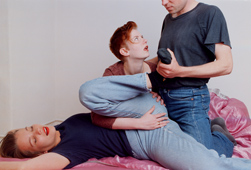
Reenactment of a photographical publication of an adult magazine of the same title, published by Teresa Orlowski in 1985 ~ more
Reenactment of a photographical publication of an adults magazine of the same title, published by Teresa Orlowski in 1985.
x close
1997
VIDEOGAMES
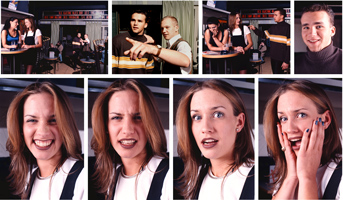
Brochure, edition of 300, disposed in public spaces ~ more
The history of fotonovela / fotocomic or fotoroman, also called photo love story, dates back to the early 1940’s in correlation with the rise in popularity of film. Initially produced in Italy and Spain, Latin-American countries began manufacturing fotonovelas that featured original stories that were not based on cinema productions. However, during the 1940’s, the fotonovela was used as a tactile, visual representation of a film. Unlike the motion picture they represented, fotonovelas did not require special apparatuses to access its content, therefore, they usually enjoyed a longer life than a movie by being loaned, traded and resold throughout a community. In Germany the youth magazine Bravo established the foto love story as a tool for adolescence / sexual education. VIDEOGAMES was printed in an edition of 300 and disposed in public spaces in Germany.
x close
Gostenhof
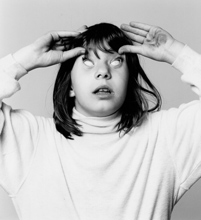
Series of 10 images from Gostenhof, a neighborhood of Nuremberg. ~ more
This series of photographs entitled "Gostenhof" was taken in a neighborhood of Nuremberg of the same name. The work was produced in collaboration with a non-profit organization called Aktivspielplatz founded in order to help children from economically distressed homes in the area.
x close
1996
ATTACK/ATTACKED
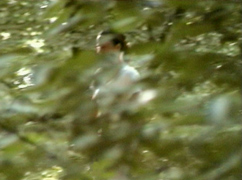
"The reason why Karl Heinz Böhm started to help african children", installation: two 8 mm projectors, two canvas screens, furniture. ~ more
The installation ATTACK/ATTACKED centers around two 8mm projections on canvas screens in juxtaposition. Inspired by the movie "Peeping Tom" directed by Michael Powell and written by the World War II cryptographer and polymath Leo Marks, the visitor enters Mark Lewis's darkroom in a stage like set.
x close







































